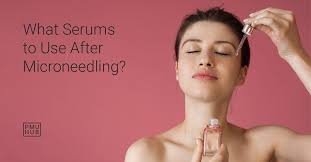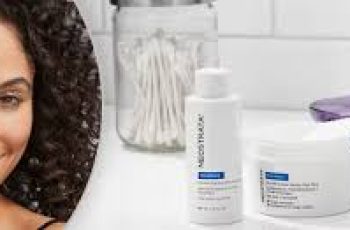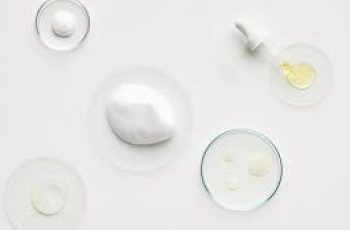
Can I Use Lactic Acid After Microneedling? A Complete Guide to Timing, Ingredients & Skincare Safety
Microneedling and lactic acid are two beloved skincare treatments. Both have earned a loyal following, but many wonder if they can be safely combined in a skincare routine.
To understand this better, let’s explore what microneedling and lactic acid are. We’ll then look at when and how to use each to avoid irritation and get the most out of your skincare.
What Is Microneedling?
Microneedling, also known as collagen induction therapy, uses fine, sterilized needles to lightly puncture the skin’s surface.
These needles typically measure between 0.5 mm and 2.5 mm in length. The sensation can feel like a slight prick but isn’t usually painful.
The small injuries caused by microneedling stimulate your body’s natural healing response. This includes a boost in collagen and elastin production.
Collagen is the protein responsible for skin firmness and smoothness. Increasing its production helps reduce signs of aging and skin texture concerns.
Microneedling is effective for reducing acne scars, minor surface wounds, and even surgical scars over time.
It also helps reduce the appearance of fine lines, wrinkles, and enlarged pores. As a result, the skin becomes smoother, firmer, and more radiant.
This treatment can also target hyperpigmentation, dark spots, and sun damage, improving overall skin tone.
It is not limited to the face. Microneedling can be used on the scalp, neck, chest, hands, and even feet.
Though it may sound new, microneedling has been around since the mid-1990s. Since then, technology and technique have improved significantly.
As skincare awareness grows, more people are turning to microneedling to maintain youthful skin with minimal downtime.
Microneedling delivers both short-term glow and long-term rejuvenation. It’s safe when done professionally and paired with the right aftercare.
What Is Lactic Acid?
Lactic acid is a chemical exfoliant that belongs to the alpha hydroxy acid (AHA) family.
Originally derived from sour milk, it is now synthetically formulated for use in skincare products.
Lactic acid is known for its ability to gently exfoliate the outer layer of the skin.
Its molecules are larger than other AHAs like glycolic acid. This means it doesn’t penetrate as deeply, making it gentler and less likely to irritate.
It works on the skin’s surface to remove dead skin cells, dirt, bacteria, and product buildup that can lead to breakouts and dullness.
Lactic acid not only exfoliates but also hydrates. It is a humectant, meaning it pulls moisture into the skin and helps retain it.
This dual action makes lactic acid ideal for brightening the skin while supporting a healthy, resilient skin barrier.
If you’re interested in learning more about how lactic acid benefits your skin, check out our detailed guide linked in the resources section.
Can I Use Lactic Acid After Microneedling?
The short answer is no—using lactic acid right after microneedling is not recommended.
Even though lactic acid is one of the gentler AHAs, it is still an exfoliant. After microneedling, the skin is too sensitive for this kind of treatment.
During microneedling, tiny needles create controlled micro-injuries on the skin. These “wounds” tell your body to produce collagen and begin healing.
In the immediate aftermath, your skin is in a fragile state. The protective barrier is weakened, leaving it vulnerable to irritation.
Products applied during this time will absorb deeper into the skin than usual. This includes acids, which can become overly potent and trigger unwanted reactions.
Using lactic acid at this stage can cause redness, burning, dryness, and inflammation. It could even damage your healing skin or worsen existing issues.
When Can I Safely Use Acids After Microneedling?
Most dermatologists agree you should wait at least 48 to 72 hours before applying chemical exfoliants like lactic acid, glycolic acid, or salicylic acid.
During this window, your skin is still healing and should be treated gently. Avoid anything that could disrupt the recovery process.
Also, steer clear of active ingredients like retinol, retinoids, and vitamin C. These ingredients can also irritate freshly treated skin.
If you’re using hyaluronic acid, though, that’s a different story. Despite the name, it’s not a true acid and does not exfoliate.
Hyaluronic acid is a humectant that pulls moisture into the skin. It helps soothe, plump, and support your skin’s barrier after treatment.
This makes it ideal for use immediately after microneedling to aid in hydration and calm any dryness or tightness.
After two or three days, you can gradually reintroduce acids like lactic acid into your routine.
For best results, apply hyaluronic acid first and follow with lactic acid only if your skin feels calm and ready.
Always use a broad-spectrum sunscreen with SPF 50 daily, especially post-treatment. Your skin will be more sensitive to sun exposure than usual.
What Should You Avoid After Microneedling?
Post-microneedling care is crucial. The wrong product or action can hinder healing or even cause harm.
Avoid using any products containing AHAs, BHAs, retinol, retinoids, or vitamin C for at least 48-72 hours.
Also skip heavily fragranced products, which can cause inflammation and stinging during the healing process.
Dermatologists recommend not wearing makeup or using cleansers for the first 48 hours. These can introduce bacteria or irritate the skin.
Allow an additional 24 hours before reintroducing active ingredients, especially stronger ones like retinol or acids.
Always consult your skincare professional or dermatologist if you’re unsure what products are safe to use during your recovery.
What Serum Should I Use After Microneedling?
Hyaluronic acid is the best serum to use immediately after microneedling.
It delivers powerful hydration without irritating the skin or weakening the barrier. It also calms the inflammation caused by the needle treatment.
Since it holds up to 1,000 times its weight in water, it floods your skin with moisture and gives it a plump, youthful look.
Post-microneedling skin can feel dry and tight. Without proper hydration, this can lead to discomfort and a compromised skin barrier.
A weakened barrier increases the risk of irritation, infection, and overproduction of oil—potentially leading to more breakouts.
Hyaluronic acid helps prevent this by keeping skin moisturized and promoting healing.
Is It Safe to Use Vitamin C After Microneedling?
Vitamin C is not recommended immediately after microneedling. Like acids, it’s too active and may irritate sensitive, healing skin.
Vitamin C is a potent antioxidant that penetrates deeply—especially when your skin barrier is compromised.
This deep absorption can cause redness, dryness, peeling, and sensitivity after microneedling.
If your skin barrier is already weakened, vitamin C may worsen existing issues rather than help.
For optimal results and minimal risk, wait at least 2-3 days after microneedling before reintroducing vitamin C.
Start with a low concentration and always patch test new products first.
Final Thoughts: Timing Is Everything
Combining microneedling with strong skincare ingredients like lactic acid requires careful timing.
Microneedling can supercharge your results—but only if you support your skin’s healing process with gentle, nourishing care.
Hyaluronic acid is your best friend during the first 72 hours post-treatment. It hydrates, calms, and protects your skin as it repairs.
Avoid exfoliating acids, retinoids, and vitamin C during the early stages of recovery.
After two to three days, you can slowly reintroduce your usual actives, starting with mild formulas and increasing gradually.
Never forget sunscreen. After microneedling, your skin is more susceptible to sun damage, so SPF 50 is non-negotiable.
If in doubt, consult a licensed dermatologist or aesthetician. They’ll guide you in creating a post-treatment routine tailored to your skin.
Still have questions?
Reach out to us on Instagram or connect with one of our skincare professionals through direct messages. We’re always here to help you glow smarter, not harder.


